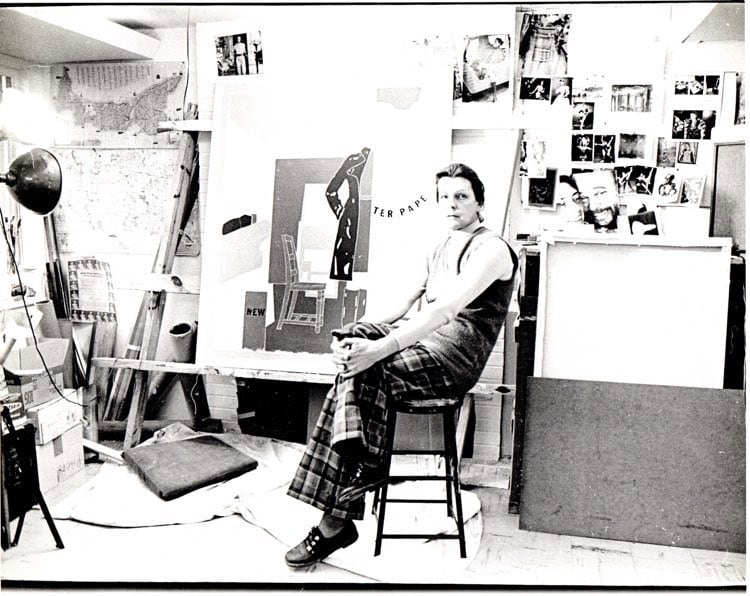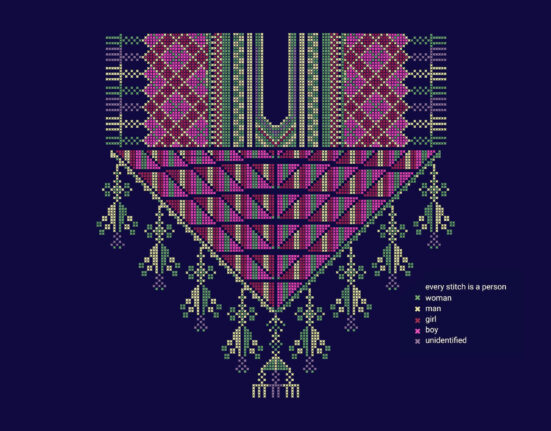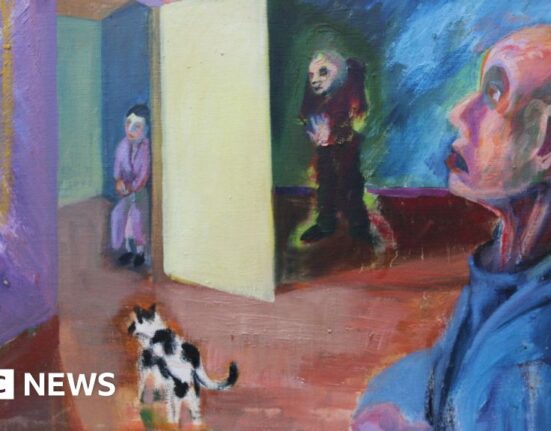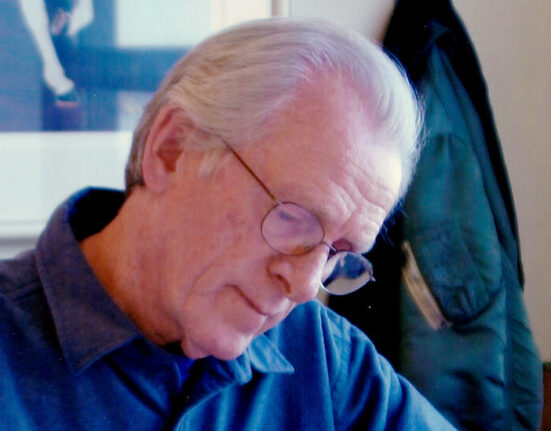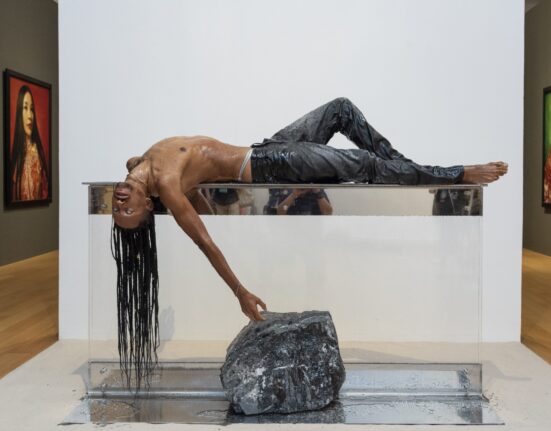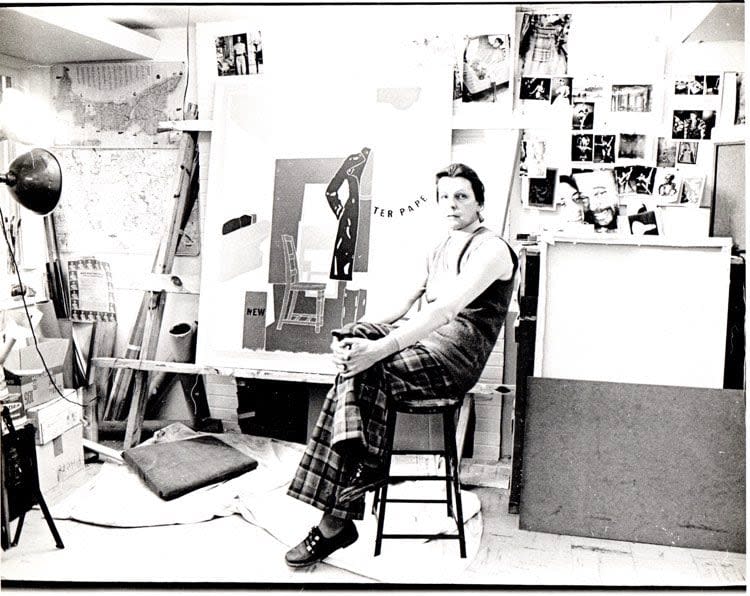
Erica Rutherford — a groundbreaking transgender painter, filmmaker and writer — is the first Prince Edward Island artist to ever be selected for the prestigious Venice Biennale art show.
Rutherford died in 2008. Now five of her paintings from the late 1960s and early 1970s will be part of the main Biennale exhibit, titled Foreigners Everywhere, which opens April 20. She is the only Canadian artist in this year’s exhibit.
“This is an artist that I’m really, really glad to see getting recognized,” said Pan Wendt, curator at the Confederation Centre Art Gallery in Charlottetown, who has spent years studying and cataloguing Rutherford’s work.
“To have someone like Erica, who certainly has to be one of the most important artists in P.E.I. in the past 50 years, get this kind of recognition is a kind of validation of what we [at the gallery] do,” Wendt said.
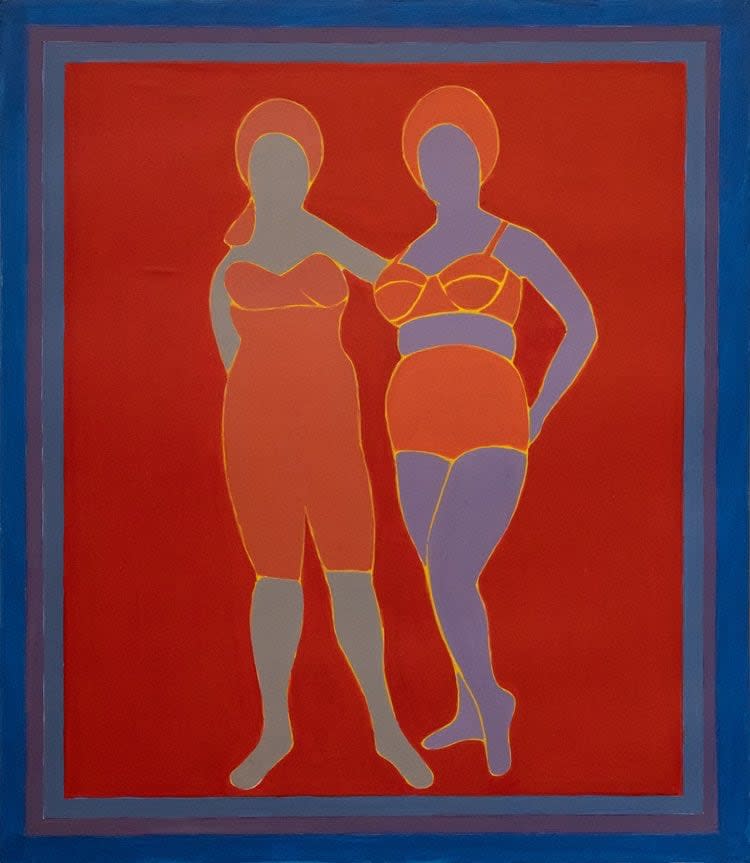

Rubber Maids by Erika Rutherford, from 1970. It is one of the paintings being exhibited at the Venice Biennale. (Submitted by Susana Rutherford)
Rutherford was born in Scotland in 1923 and spent the first part of her life in England, then moved to the U.S. before settling to P.E.I. in 1985.
In recent years, her work has been gaining international recognition, including being part of a current exhibit at London’s Tate Britain museum.
The artist’s daughter, Susana Rutherford, says the interest has been validating.
“The curators … that we’ve dealt with, they’re really excited to discover her,” Rutherford told Mainstreet P.E.I. host Matt Rainnie.
She was an artist who was kind of a restless explorer of herself, really. She used her work as a way of working through her own issues and her relationship to the world. — Curator Pan Wendt
The Venice Biennale, which features artists from around the globe, is widely considered to be one of the most important art exhibitions in the world.
The five paintings chosen for the Biennale — self-portraits of a sort — reflect her mother’s struggle with gender identity, Susana Rutherford said.
“It was a lifetime preoccupation for her, feeling that she was not living the right gender,” she said.
Wendt also sees that struggle in the Biennale paintings.
“I think they’re her imagining herself becoming a woman. And she’s posing often in sort of very glamorous outfits,” Wendt said.
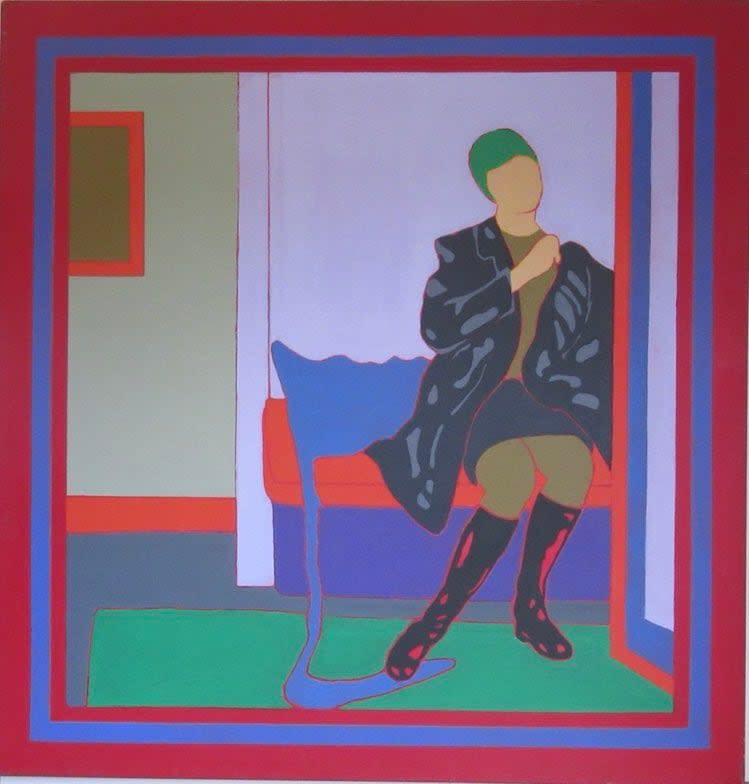

The Coat (The Mirror) by Erica Rutherford, from 1970, will also be exhibited at the Venice Biennale. (Submitted by Susana Rutherford)
Seeing those gender identity issues reflected in Rutherford’s work is not a surprise, said Erika Warren, a transgender artist living in Charlottetown.
“A lot of trans art is about that struggle,” said Warren. “Sometimes that’s the only way you can imagine yourself that way is to just put it out there through art, because actually saying it is such a heavy thing to deal with.”
Warren said she has channeled a lot of her own feelings about gender identity into her art.
“A lot of my art deals with themes of that: themes of otherness or not feeling connected to your body. It’s a really difficult thing,” she said.
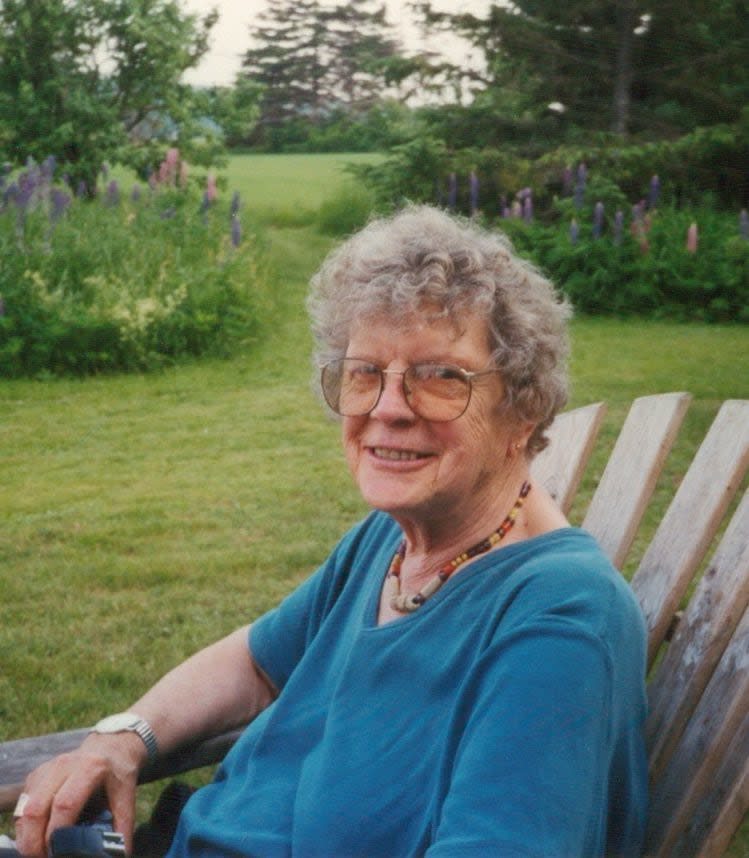

Erica Rutherford at home in Pinette, P.E.I., around 1992. (Submitted by Susana Rutherford)
Warren said she is happy to see Erica Rutherford receiving this type of recognition, noting that trans people often get attention for negative reasons.
“It doesn’t do us justice as people,” said Warren. “To have the discussion be about the art she did and the impact she had, instead of just the fact that she’s trans, is heartening.”
An evolving artist
Rutherford went through many phases as an artist, said Wendt. Earlier in her career, she worked in theatre and film and made abstract paintings and collages.
The paintings in the Biennale are done in a pop art style, he said, and feature hard edges and saturated colours.
After she started visiting P.E.I. in the 1970s and then moved there permanently, her art continued to evolve.
“There’s a ton of imagery of Prince Edward Island in her work from then on, and she really celebrates the kind of comfortable domesticity she finds here,” Wendt said.
“She was an artist who was kind of a restless explorer of herself, really. She used her work as a way of working through her own issues and her relationship to the world.”
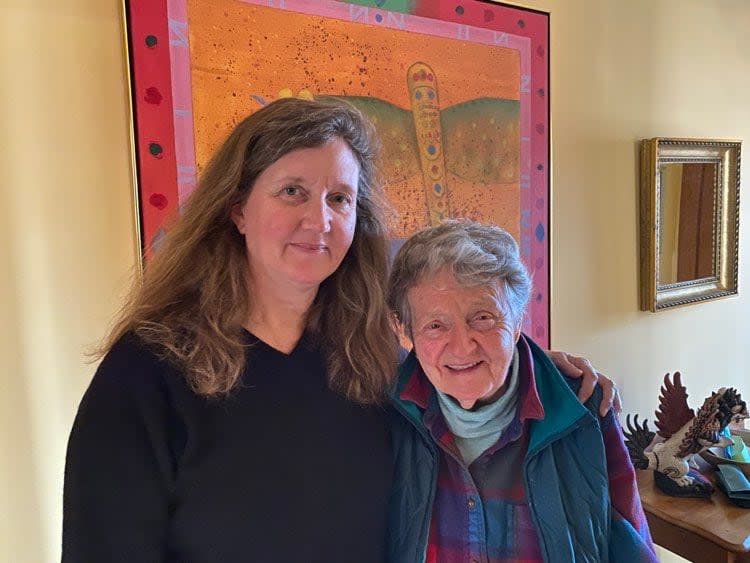

Erica’s daughter Susana Rutherford, left, and Erica’s long-time partner Ambika Gail Rutherford, stand in front of one of Erica’s paintings. (Submitted by Susana Rutherford)
Susana Rutherford and Wendt are travelling to Venice to see the Biennale show. They both say the recent attention comes out of a desire by galleries and curators to uncover the work of marginalized artists.
“All of these artists who have been overlooked are starting to be recognized,” said Wendt.
Erica Rutherford faced discrimination in the art world and academia, said Wendt, and that was part of the reason she ended up moving to P.E.I.
Rutherford’s neighbours and friends in Pinette, a rural area in the Island’s southeast, were understanding of her gender identity but it was still difficult, her daughter said.
“Being a trans parent in the 1970s wasn’t always an easy road,” said Susana Rutherford.
“There was a lot of love and support and understanding inside of our family and amongst my parents’ close friends. But in the wider community, we didn’t always deal with the most understanding reactions.”
Retrospective exhibit
Wendt is curating a retrospective exhibit of Rutherford’s work that will open at the Confederation Centre Art Gallery this June before touring nationally.
He hopes it will be a chance for Islanders and visitors to discover Rutherford’s art.
“There’s a lot of people here who will remember Erica, but I think there’s a whole new audience for her work,” said Wendt.
“I think it’s going to blow people away.”

